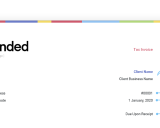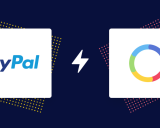
The art of upselling: Earn more money by stacking your services
You’re happy with your existing customers, but you need a bit more income to meet your monthly revenue goals. Don’t worry, even if you don't have a brand new client ready to go you can still achieve your goals with an upsell.
Article contents
− +
Upselling Meaning
Upselling is when you sell a new or enhanced product or service to an existing client. For example, a freelance web developer may upsell a client by offering an SEO package, or a business coach may create an upsell by selling their one-on-one clients an online course.
Upselling is a delicate art. You’ve got to consider your own services and capacity, your clients’ receptivity and willingness to pay, and find opportunities that will bring genuine value to your client (whilst increasing your income).
Freelancers who master upselling can enjoy more consistent cash flow, since they can earn more money per client.
We asked freelancers how they identify the best upsell opportunities and circumvent the most common upsell challenges. Here’s what they had to say:
Why everybody wins with upselling
When done properly, an upsell will be just as valuable to you as it is to your client. You will only be successful if you focus on finding opportunities that will advance your customers’ goals—otherwise, your clients may see your upsell attempt as a money grab.
Rather than asking yourself, “How can I make more money off this client?” think about what your client wants to achieve, and how you can help them get there. Look for opportunities your client hasn’t thought of yet, and build your pitch around that.
Of course, upselling has major benefits for your business as well.
Knowing how to bolster your income without significantly expanding your client base is crucial. In fact, Brook McCarthy, Business Coach & Digital Marketing Trainer at BrookMccarthy.com, suggests that this skill might even save your business’s longevity.
“Owners and freelancers close their businesses because constant hustling wears them down. There's an easy solution: Focus on increasing your lifetime spend per client, raise your prices, and consider a retainer model. With high-value jobs, more return clients, and a consistent monthly business model, you won’t need to worry about the next job.”
As McCarthy says, the infamous "feast or famine" cycle doesn't have to be your reality. By investing in the development of your sales strategy and business model for repeat purchases and upsells, you can rest assured that your business will stand the test of time.
Tips for creating your own upselling opportunities
1. Focus on customer priorities and values
Whenever you are working on marketing for your business, it’s vital that you focus on the value you bring to your clients, rather than the benefits you yourself may feel.
Founder and CEO of remote-job.net Max Benz says, “Frame the upsell in terms of what’s in it for the customer. Ideally, this would mean emphasising features that save your clients time or money, or enhance their productivity.”
Think of upselling not as a way to sell your client another item, but as an opportunity to improve their quality of life. When pitching an upsell, highlight the positives that will come off the back of it. For example, if you’re planning to pitch your client on a web design training course, emphasise the fact that once they complete the course, they’ll be able to make updates and improvements to their website on their own, rather than paying someone else to do it for them. Clients will see the benefits of saving money and learning a new skill, and they’ll be far more willing to sign up for your enhanced services.
Freelancers with ongoing, positive client relationships are in the best position for such this, as they’ve already built a foundation of understanding with existing clientele.
2. Learn to identify receptive clients
Successful upselling depends on identifying clients that are most likely to be receptive to your offer. Just because someone is an existing customer doesn’t mean they’re willing or able to buy more from you, especially if they’re on a tight budget.
But price isn’t the only issue. Overall, your working relationship with the client should be positive—if the client isn’t happy with your current work, it’s unlikely they’ll be willing to pay more until they’re satisfied.
Several client characteristics can clue you into who’s open to upselling. That’s why freelance SEO and marketing expert Kim Herrington of KimberlyHerrington.com starts by assessing the current working relationship before initiating an upsell.
Herrington evaluates the client’s behaviour and disposition by noting on-time payments and realistic expectations, primarily. If these aspects of the working relationship are not satisfactory, pushing for an upsell is likely to be more of a headache than a windfall. Herrington also considers whether the clients will truly benefit from the upsell.
“It’s not just about increasing our revenue per client but also making sure they’re going to see additional results. There’s nothing worse than an upsold client who doesn’t see results, then cancels their whole contract with you.”
3. Try “cross-sell” by pairing your services
Freelancers often limit their earning potential by providing too many services as a single option. You may be able to increase your income by segmenting and stacking your related services.
For example, Krittin Kalra, founder of Writecream, shared an experience in which a client needed help with branding, but they had only purchased the company’s content creation tool. A salesperson on Kalra’s team took the initiative and offered an upsell.
“They told the client how branding and marketing work hand-in-hand, and then pitched the client with a 10% discount on the hourly rate, and a few bonus hours.”
By separating out their content creation and branding services, Kalra created new income-boosting opportunities for themselves. Not only did they enhance the offer value with a discount, but the call to action was all the more compelling, as the salesperson limited the offer to 24 hours.
4. Exercise sensitivity and respect boundaries
It’s always best to approach an upsell opportunity with sensitivity and patience, even if your client is happy with your current work.
Being too pushy can cause your client to feel as if their current patronage isn’t enough. This can sour even the best working relationship with a loyal customer.
No matter what you’re offering, you must be mindful of the language and channels you use when upselling. Prioritise the client’s comfort by stepping into their shoes to understand their perspective.
The best way to do this is to ask for permission before sending any marketing correspondence, and communicating with careful consideration of their responses to your upsell efforts.
How to integrate upselling into your marketing strategy
Remember: Upselling isn't always a one-and-done thing. Instead, opportunities can arise organically over time through ongoing interactions with prospects and existing customers.
In fact, you can even build upsells into your regular marketing activities. No matter what platforms you use to promote your services, you can frequently call attention to the scope and value of your services, and offer discounts on your lesser-used services to encourage people to try them out.
Related: How to build your freelancer marketing strategy
Here are a few examples of how freelancers might use upselling opportunities, to inspire you:
Email marketing: A graphic designer’s email campaign may discuss the importance of animated vs. still visual content, supported by testimonials. Over time, subscribers buying still images may grow interested in animated content, since it complements and enhances their existing purchase.
Testimonials from upsold clients: Imagine a freelance writer who has used upselling previously to convince existing customers to add a social media writing package on top of their standard blog-writing package. They could ask the happy clients to share a few testimonials, and then integrate the feedback into their marketing materials to convince others to do the same.
Cross-selling an online course: A freelance accountant might develop a short series of courses on how to use their finance tools to maintain a business’s cash flow. They could easily cross-sell this product, offering their course to their existing clients, while offering their accounting services to students who signed up for the course independently.
Increasing revenue with upselling
No matter how much you earn, upselling and cross-selling are critical skills for ensuring your business's viability and strengthening your customer retention rates. Once you've mastered the art of upselling, you can enhance customers' lifetime value and free yourself of worries about inconsistent earnings for good.
Cover Photo by Kyle Glenn on Unsplash
Join newsletter
ABOUT ROUNDED
Invoicing and accounting software for sole traders. Get paid faster and relax at tax time.
























